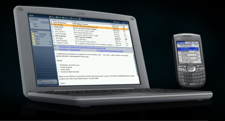This is exciting – three notable personalities from the Haskell world (Bryan O’Sullivan, Don Stewart, and John Goerzen) have teamed up to write a new book on Haskell for O’Reilly. Even better, it will be published under a Creative Commons license and released chapter-by-chapter on their website.
For now all that’s on their new site is a blog, but that’s sure to change over the coming days and weeks.
http://www.realworldhaskell.org/
I suspect this will become the standard intro to Haskell for working programmers like myself. If only it had been available at the beginning of my year-of-trying-to-learn-Haskell!
